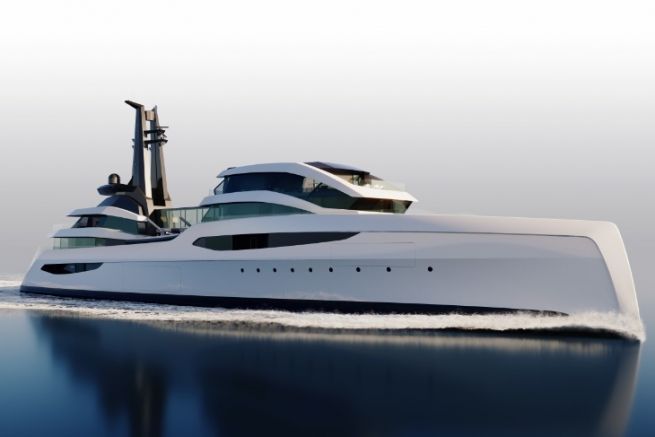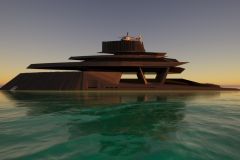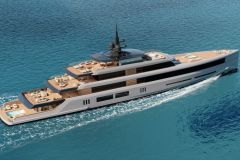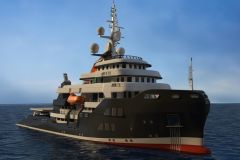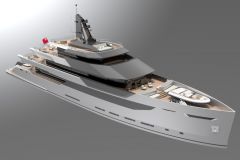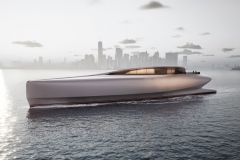A radical concept for privacy
EXPV is an explorer developed by Feadship and Harrison Eidsgaard for clients who want to explore the world, keep their privacy and accommodate up to 10 people on board, without everyone crossing paths all the time. Thus, this radical design concept with its inverted bow and numerous glass structures has two superstructures. The owner's area is in the front and the guest area in the back.
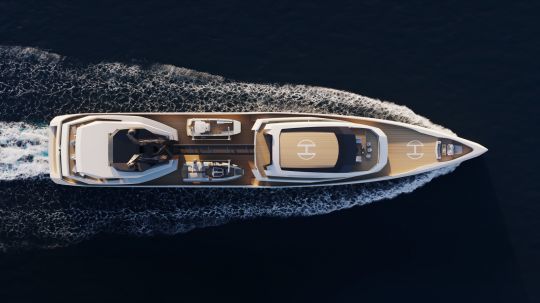
A glass suspension bridge, a technical feat
These two deckhouses are served by stairs and elevators, but also connected by a glass suspension bridge.
Jan-Bart Verkuyl, director and CEO of Feadship explains: " The glass bridge was one of the challenges and we worked closely with De Voogt engineers to see how we could make it work. Suspended in the air, it's a completely new idea and quite an engineering feat."
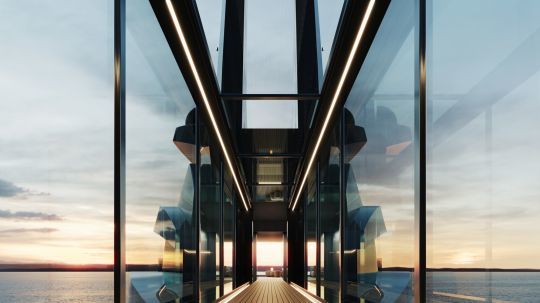
The Ocean Beach, in the heart of the ship
The heart of the yacht is located on the lower deck amidships and is called the Ocean Beach. It's a beach club with hydraulic bulwarks that tilt to either side, raised above the water to avoid waves, with a pool and a large skylight in the ceiling. Sliding glass doors allow the space to be completely enclosed while leaving the platforms open. This arrangement differs from the classic yacht where the beach club is located at the rear.
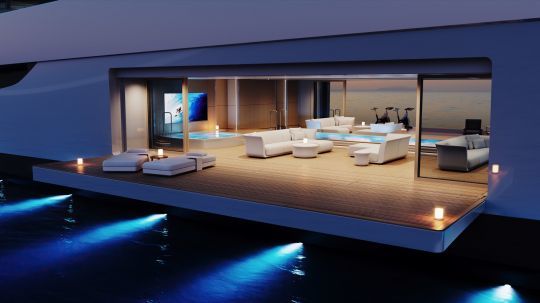
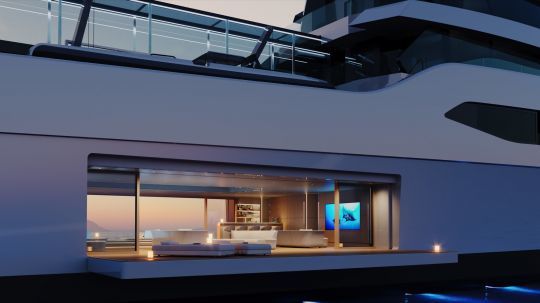
Arrivals by air or sea
Large tenders up to 13.5 m long, with no height restrictions, are stowed on the deck above the Ocean Lounge, under the glass deck. More tenders and all can be stored in a side-opening garage under the foredeck. Guests will also be able to use a helicopter positioned on the foredeck so as not to disrupt the activities of guests on the back of the boat. For those who choose to disembark by dinghy from the transom, a corridor leads to the Ocean Lounge, and in fact the first view guests will have of the boat is the pool.

A mast with a crow's nest for a breathtaking view
Another feature of the boat is the substantial mast atop the aft deckhouse. A crow's nest is integrated into the structure, with a two-person gondola that allows you to enjoy the view from above. The engine room has been moved to a single level and houses a diesel-electric propulsion, generators and pots to reduce noise and vibration, with the possibility of integrating renewable fuels in the future.

A guest layout inspired by cruise ships
The inspiration for the guest accommodations came from one of the characteristics of cruise ships, in which the most desired cabins are always outward-facing and positioned aft. Thus, there are 6 guest suites arranged around the stern, on two deck levels, and all have sea-facing beds with private terraces. The cabins can also be combined into VIP suites depending on the number of guests on board.
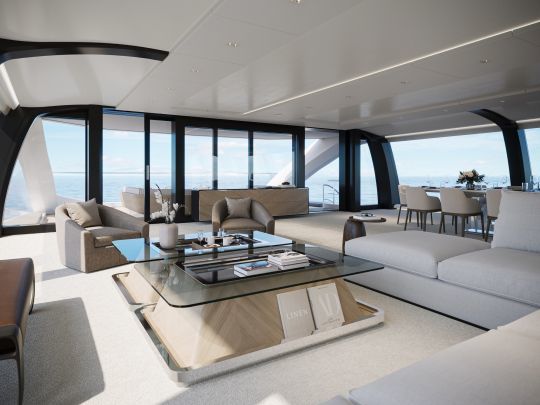
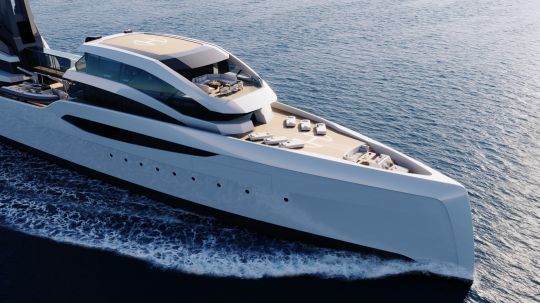
The unusual layout of the superstructure means that the guest deckhouse is actually a self-contained unit, with easy access to the aft platform for swimming, accommodations on the main and upper decks, and its own lounge and bar connected to the owner's area via the glass deck.

Transatlantic autonomy
With impressive tanks of 250,000 of fuel and 35,000 liters of water, EXPV allows for long periods of autonomous living, but also for crossing the Atlantic. With an expected maximum speed of 15.5 knots and a cruising speed of 14.5 knots, its range is estimated at 6,000 nautical miles.

 /
/ 